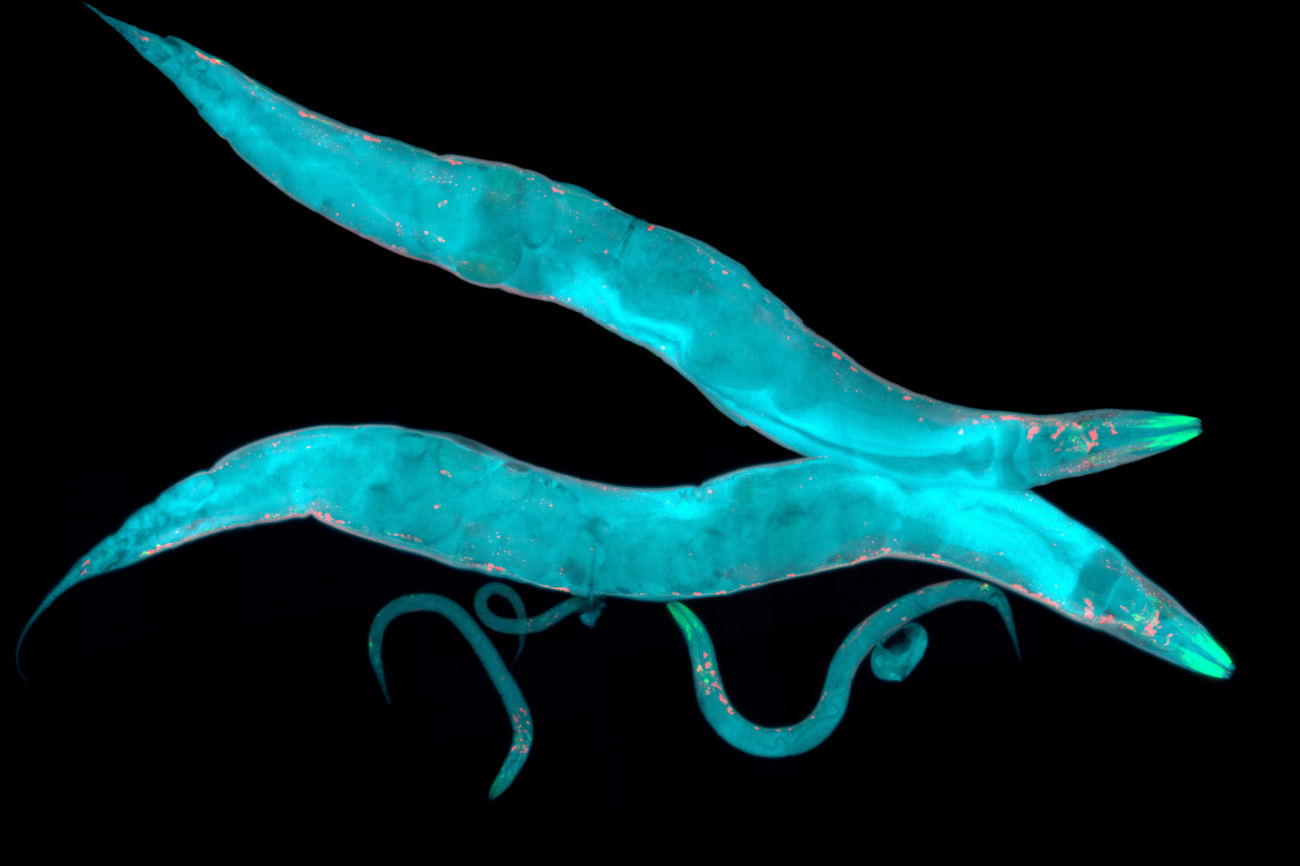
Researchers dosed microscopic hydra with cannabinoids to monitor their eating habits, and in 2000, a study at the University of Wisconsin-Oshkosh injected THC into the cerebrospinal fluid of rats and let them loose on chocolate cake batter. The conclusion? The active ingredient in marijuana effectively gave THC-injected rats bites that ate more greedily.
Now a a new study extended the investigation to one of the most well-studied organisms on the planet, Caenorhabditis elegans, a type of roundworm often used in laboratory experiments. Since about two-thirds of human disease genes are present in the worm and about one-third of human genes in general, the results could open the door to further research into the human nervous system.
Experimentally induced Munchies
But first, scientists at the University of Oregon Neuroscience Institute had to answer some basic questions about the worms’ tiny nervous systems.
Worms usually feed on bacteria from decaying plant matter, and once born develop a preference for the more nutritious varieties. The researchers singled them out and gave them anandamide, a cannabinoid found in worms as well as mammals. They then fed the worms five different bacterial starters and measured how aggressively they pumped them into their bodies.
As in humans, the cannabinoid increases the worms’ interest in richer food and decreases that in bland food.
Read more: Experiments Revealing How Marijuana Can Treat Dementia
Hedonistic worms
For the second experiment, the researchers created a “T-maze” that would allow the worms to twist and choose between a pile of low-nutrient or high-nutrient bacterial cake. In one iteration of the course, the scientists added a paralytic agent to the bacteria to see if the worms would sniff out the tastier pile on their first try. Either way, however, the worms were given a “non-nutritive” appetizer spiked with anandamide before they set off.
They again concluded that the cannabinoid led to more abundant, “hedonic” eating, as if the worms were feasting for pleasure. The researchers also found that smell plays a significant role in the worms’ hedonism, as those with a genetic mutation that reduces smell are much more conservative in their consumption.
Read more: Medieval monks were full of worms
What Causes Munchies?
The bingeing process begins, according to the report, with the activation of certain receptors in the endocannabinoid system by an exogenous (THC) or endogenous cannabinoid. From there, the system tunes the smell neurons to highlight food, which triggers appetite.
The endocannabinoid system triggers hunger when the body’s resources are low. That’s why marijuana users often experience cravings for foods high in sugar and fat that can’t be satiated no matter how much they eat. The system too plays an important role in obesity, and so the one-millimeter-long worms could one day aid research in this area.
Read more: If marijuana is giving you an upset stomach, you’re not alone

